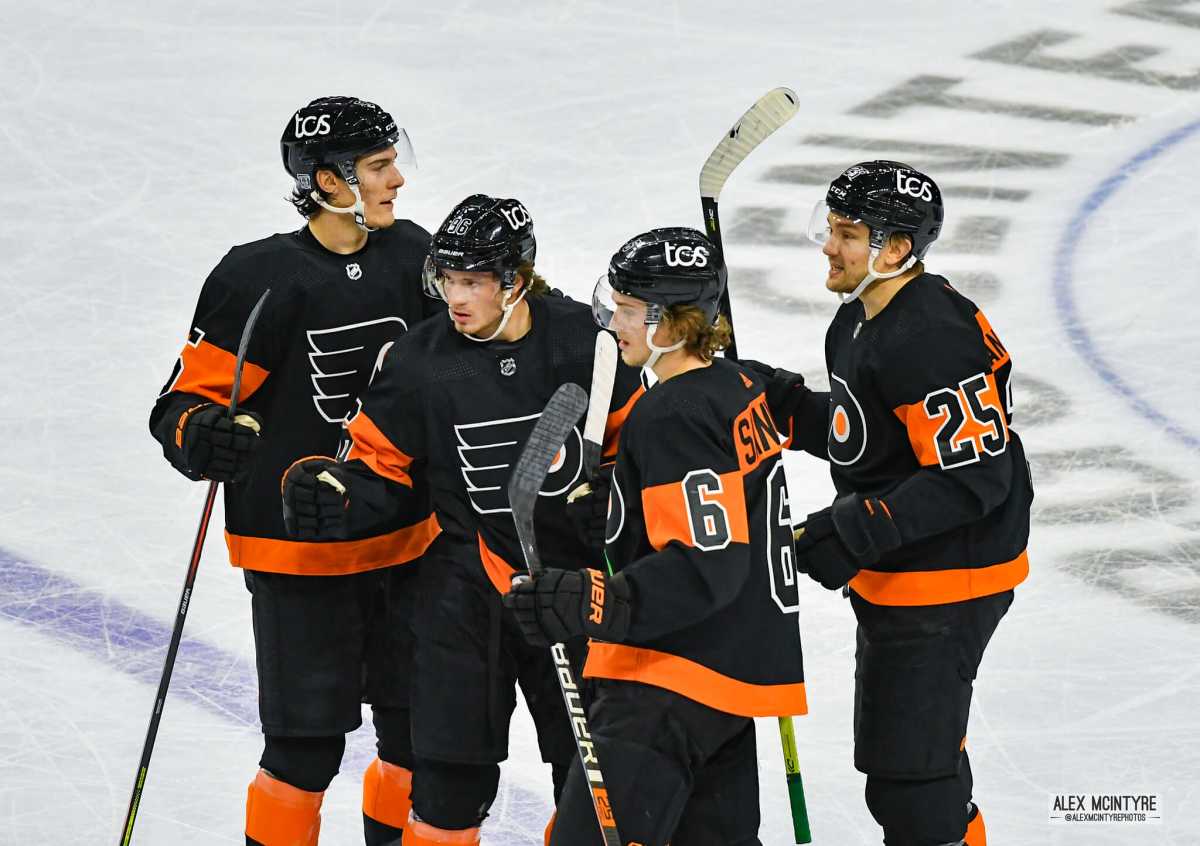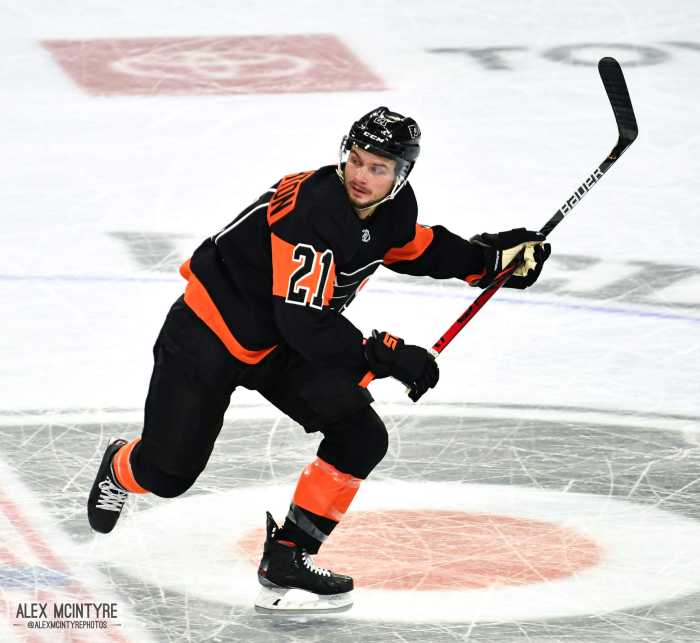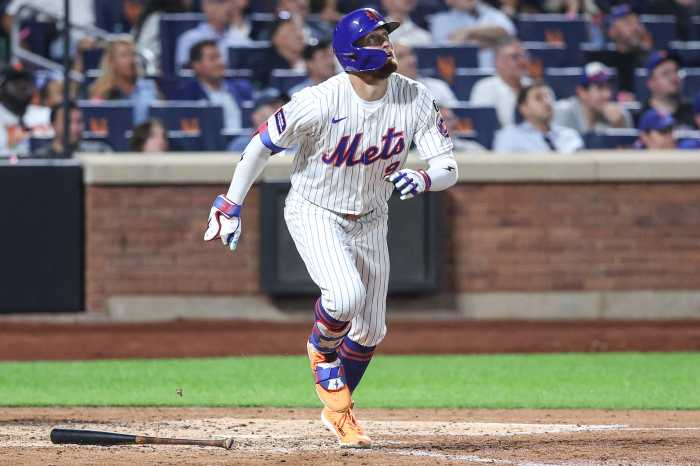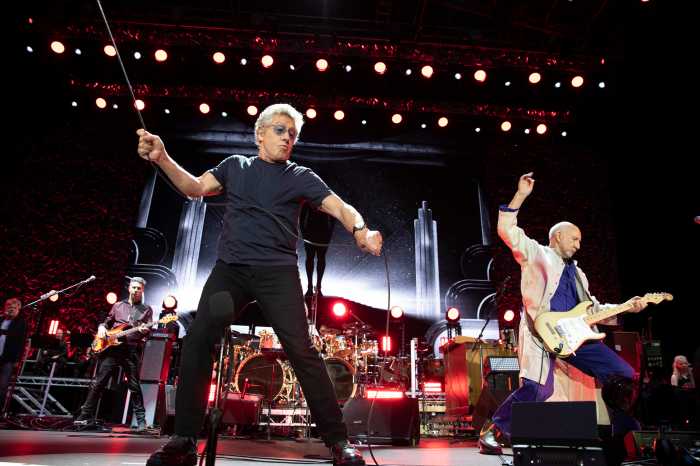Before Travis Sanheim agreed to his contract extension, the Philadelphia Flyers were close to surpassing the salary cap. Then, Chuck Fletcher signed Derick Brassard. That had to have made the Flyers non-compliant to the salary cap, right? Actually, wrong.
Aside from the acquisitions, signings, and extensions, Fletcher has hit in all phases of an NHL offseason. We’ve gushed over the leadership on defense arriving in Philadelphia. Recently, Sean Couturier and Joel Farabee received team-friendly extensions, keeping them both for the better part of the next decade.
Fletcher traded a steep price for Rasmus Ristolainen after shipping Shayne Gostisbehere for no return. His reason for trading Gostisbehere for no return was “necessary given the reality of the salary cap.” A day later, Robert Hagg, a 2021 first-round and a 2023 second-round pick, moved to the Buffalo Sabres for Ristolainen. Until these players take the ice in 2021-2022, it feels like Fletcher took a step back to take a high risk. If the risk is worth the reward, then I’ll come around to crown Fletcher for his “crazy like a fox” decision-making.
Currently, the Flyers are cap compliant. There isn’t any need to panic with $381k available.
The Tampa Bay Lightning have proven this on the way to back-to-back Stanley Cup championships.
Financial Loopholes
Shaking the Philadelphia Flyers culture forced Chuck Fletcher to pay a bold price. Luring the right talent means money has to talk. Ryan Ellis and Cam Atkinson, for example, improve the Flyers at a price. The risk was trading Jakub Voracek, who tied for the team lead in scoring a season ago. For his price, Philippe Myers was serviceable with Travis Sanheim in the past, but Rasmus Ristolainen should make the defense more physical while contributing to the powerplay.
On paper, it looks like Philadelphia rerouted back towards salary cap purgatory. The dreaded “flat cap era” puts even more pressure on NHL franchises. Many of the crazy, leaguewide offseason trades directly correlate to the flat cap. Through the 2025-2026 season, the current collective bargaining agreement keeps the leaguewide salary cap at $81.5mil.
Many teams will utilize the long-term injured reserve list as a loophole to expand past the $81.5mil cap. Remember, the Tampa Bay Lightning was $17.3mil over the cap in 2020-2021. Players on the long-term injured reserve list do not count towards the active salary cap.
Franchises like the St. Louis Blues and New York Islanders also used this tactic. Including the Lightning, all three of those franchises were playoff teams in 2020-2021.
By placing an expensive player (ex: Claude Giroux at $8.275mil) on long-term injured reserve with a return date for the playoffs, the Flyers could sign up to $8.275mil in other assets while remaining salary cap compliant through the playoffs (there is not a cap limit in the postseason.)
Adapting to the Environment
Franchises that understand financial investments and how to maximize profits will always be ahead of the curve. The Tampa Bay Lightning are working towards a dynasty run in one of the toughest leagues to accomplish that feat. Chuck Fletcher cannot ignore that. The NHL is adapting a “Moneyball” concept, different from the traditional definition. Exploiting the lack of a postseason salary cap is as important as signing quality players to a team-friendly contract.
Without adapting to this pace set by playoff teams like the Lightning, St. Louis Blues, and New York Islanders, the Philadelphia Flyers lapse. Setting a lineup and sticking to the players within the system won’t get the job done in the current state of the NHL. Every franchise in the NHL is privy to exploiting the long-term injured reserve list. The correlation between playoff success and navigating the salary cap is no coincidence.
In addition to signing assets with an expensive player on the long-term injury reserve list, franchises gain trade capital. Executing this loophole allows franchises to rent players with one year left on their contract and flip them for draft picks in the upcoming offseason. In turn, those picks evolve into prospects.
The Flyers selected solid prospects over the last two NHL Entry Drafts. Fletcher and Brent Flahr work well together in evaluating talent to keep quality depth within Philadelphia’s system.
Get on the bandwagon and adapt to the new NHL, where the Flyers could break the cycle of mediocrity.
Photo Credit: Alex McIntyre




























